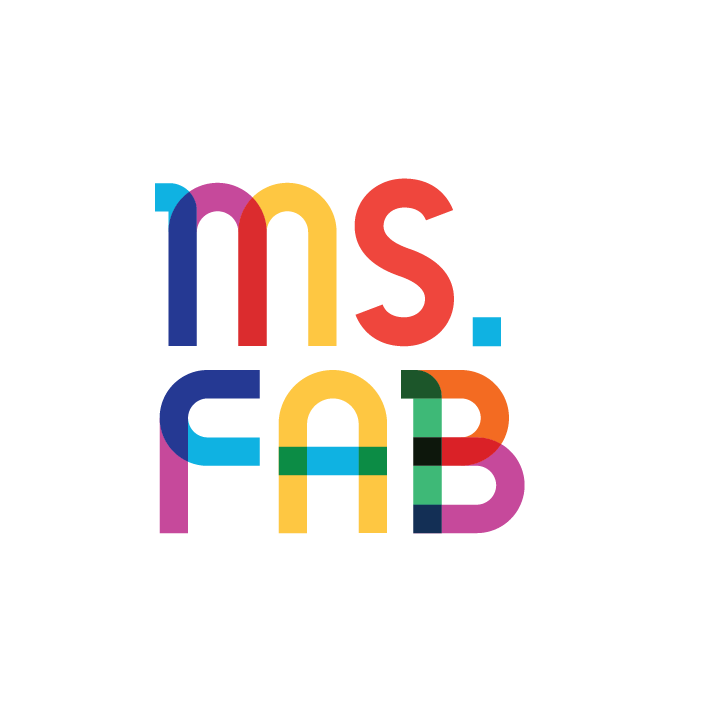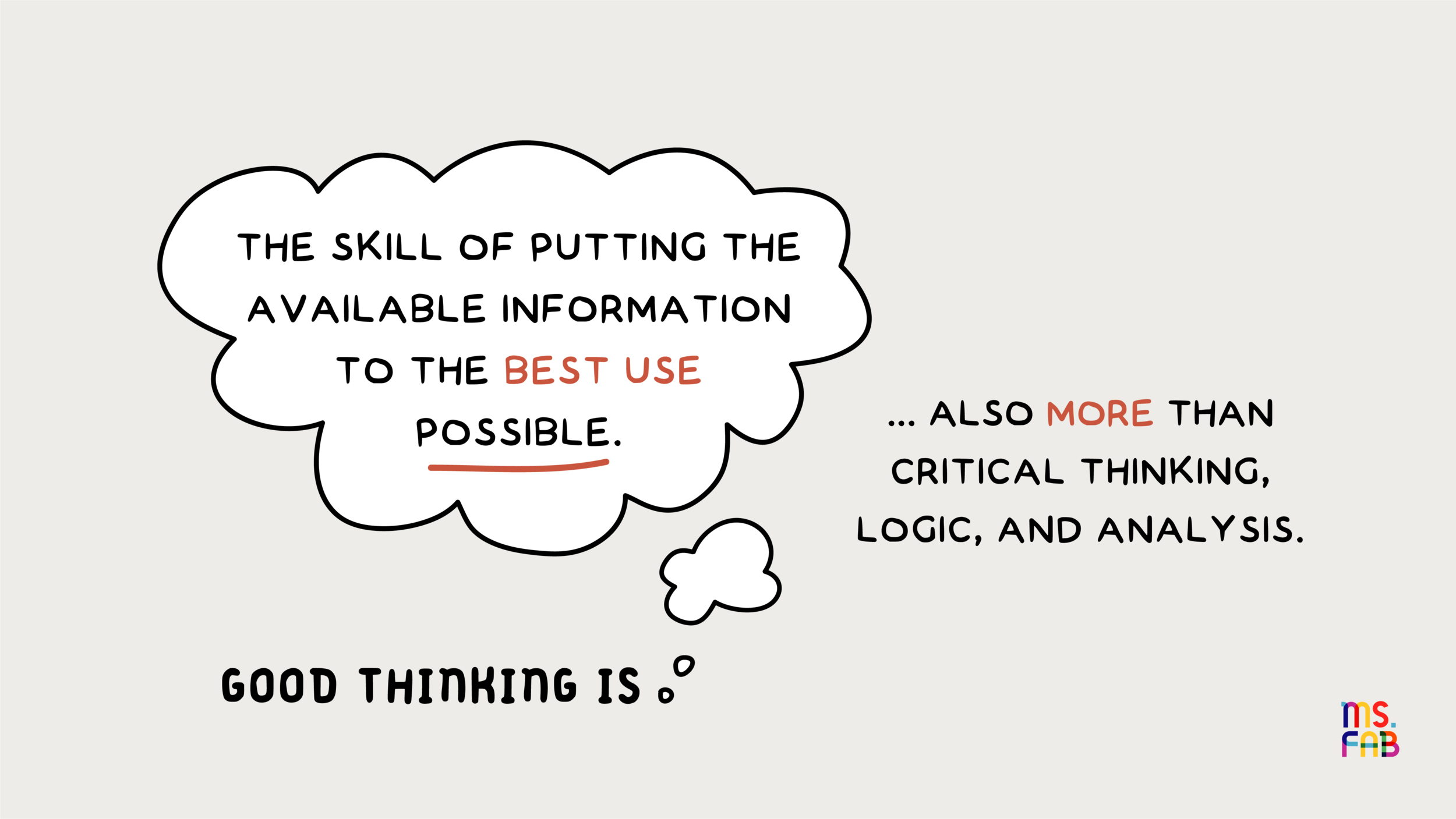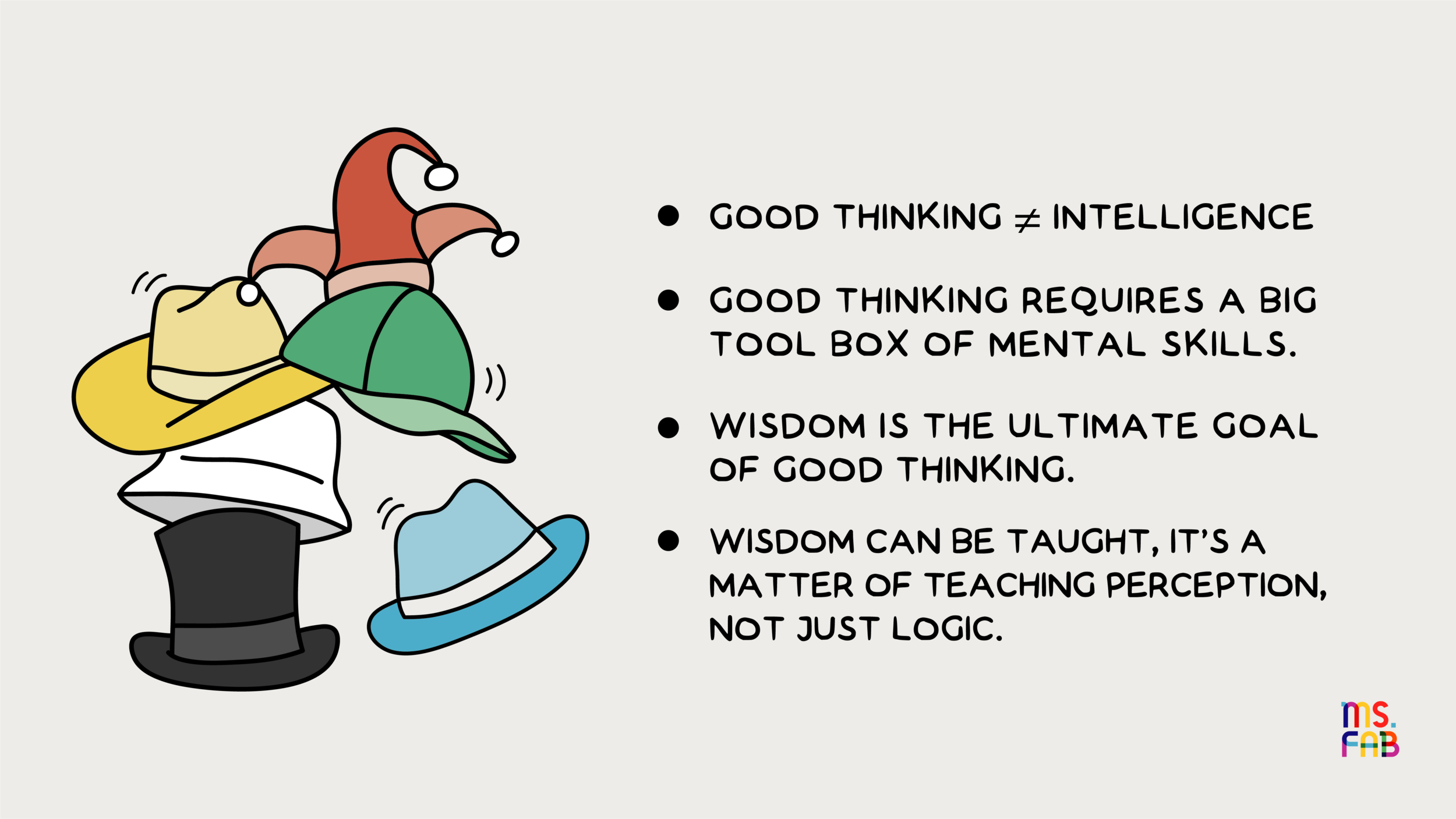Thinking Hats
Intelligence means potential for good thinking.
But many intelligent people never seize upon their potential.
They never learn how to think.
By contrast, many people are excellent thinkers, even without much natural talent. They had good teachers and practiced a lot.
Author Edward de Bono says intelligence is like a car:
“A powerful car may be driven badly. A less powerful car may be driven well. The skill of the car driver determines how the power of the car is used.”
Schools don’t teach kids how to think.
They teach math, history, and literature “just in case,” but all that information goes to waste unless students know what to do with it.
Good thinking is the skill of putting the available information to the best use possible.
Good thinking is also more than critical thinking, logic, and analysis. It includes these tools, but it also includes creativity, exploration, design, and perception.
The best thinkers use a big tool box. They’re skilled at both analytical and elastic thinking.
So, how do you learn to think? And how do you teach your kids?
Edward de Bono wrote a great book, Teach Your Child How To Think, that encourages parents to teach their kids the different “thinking hats.”
The WHITE HAT represents facts, figures, and information.
This hat focuses on the available information and seeks objective facts, not what anyone feels about them.
When you are wearing the white hat, you may ask questions like, “What information do I have? What information is missing? How do I get the information I need?”
The RED HAT represents emotions, feelings, hunches, and intuitions.
It’s the opposite of the white hat. The red hat is not interested in facts, but rather in people’s feelings.
When you are wearing the red hat you may ask yourself, “What do I feel about this matter right now?”
️The BLACK HAT represents caution, truth, and judgement.
It’s the hat of critical thinking and reality. De Bono says you can think of a stern judge or a teacher who gives you a red mark if you get something wrong.
When you are wearing the black hat, you may ask questions like, “Is it true? Does it fit the facts? Will it work? Is it safe? Can it be done?”
The black hat is often overused in traditional schools and work settings. However, when used in combination with other hats, it prevents us from making silly mistakes and can lead to the improvement of ideas.
The YELLOW HAT represents advantages, benefits, and savings.
Think of sunshine and optimism. This hat is full of hope, but it’s also a logical hat, so the reasons behind the hope must be provided.
When you are wearing the yellow hat you may say things like, “This is why it can be done, why there are benefits, and why it is a good thing to do.”
The GREEN HAT represents exploration, proposals, suggestions and new ideas.
Think of the energy of growth, fertility, and vegetation. This is the hat for creative thinking, where ideas are put forward.
When you put on the green hat, you are prone to come up with suggestions and ideas. This is active thinking, not reactive thinking. You may ask questions like, “What are the alternatives for action? What can I do here? Are there different ideas?”
The BLUE HAT represents thinking about thinking, and the control of the thinking process.
Think of the blue sky that is above everything. With the blue thinking hat you are above the thinking: It’s the overview and the process control. De Bono says it’s like the conductor of the orchestra.
With all the other hats we think about the subject matter, but with the blue hat we think about our thinking. You may ask questions like, “Where am I now? What is the next step?”
Too often, we act like the white hat (facts) and black hat (judgement) are the only valuable perspectives.
But good thinkers use all six hats.
They also consider their emotions, evaluate upsides, propose crazy ideas, and monitor their overall thinking process.
The six hats help kids see with a wide-angle lens. Kids learn to broaden their perception and use a diverse set of mental skills. In other words, they build wisdom.
Wisdom is the ultimate goal of good thinking.
It’s the habit of observing the breadth of a situation. Unlike intelligence, wisdom is not a natural-born talent. It’s also not the natural product of age. We’ve all met wise kids and foolish adults!
Wisdom comes from deliberate practice. It requires mentorship and experience solving complex problems. In the right learning environment, kids can build more wisdom in a year than many adults learn their entire lives!
At Synthesis, we’re designing simulations to teach kids wisdom. Students work in teams to stop forest fires, run movie studios, and build fishing businesses. They learn that they can’t just use logic to win the games. They need to practice creativity, teamwork, perception, and much more.
Intelligence is a potential— and for that potential to be fully used, kids need to develop a tool box of thinking skills. Without such skills, the potential is under-used.
We can use de Bono’s “Thinking Hats method” to help kids develop this big tool box of mental skills.
Alright, let’s recap:
I explore ideas like this in Fab Fridays, my newsletter on childhood education with a twist + new ways to learn.
Subscribe below!



